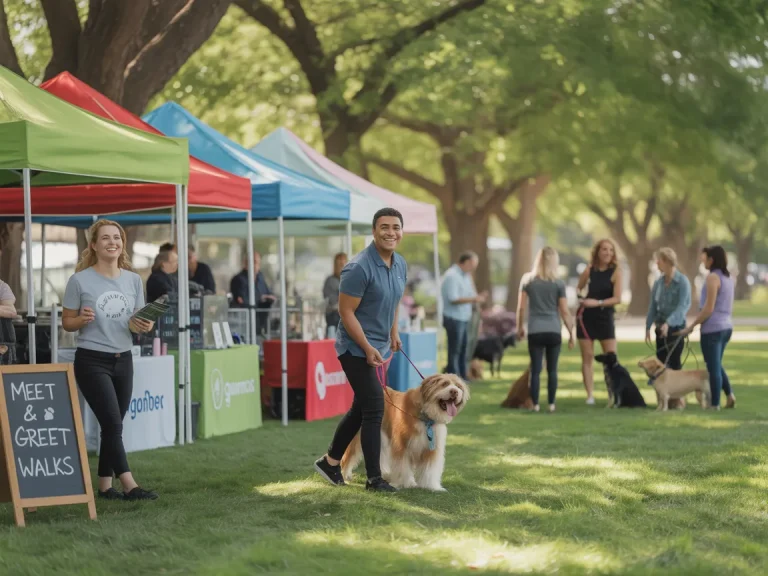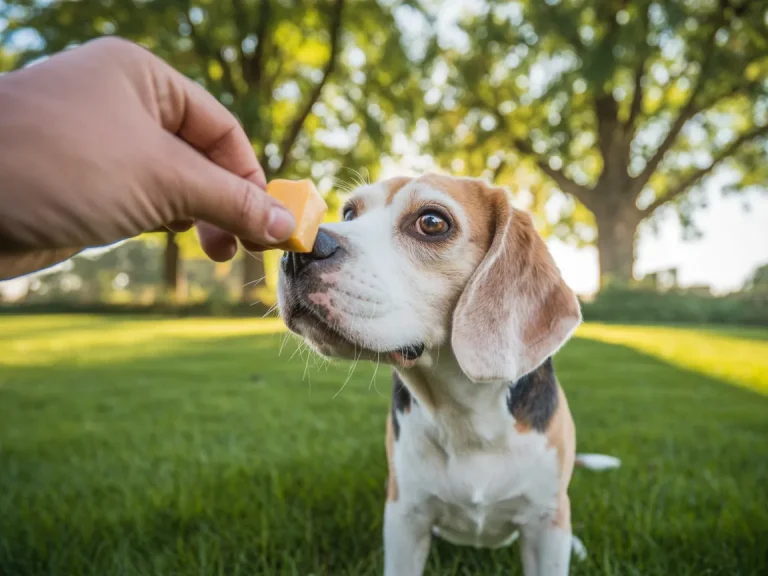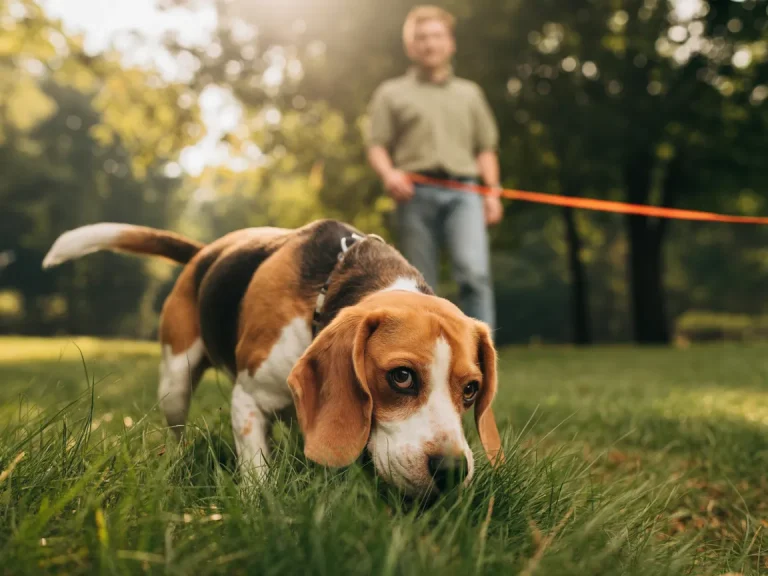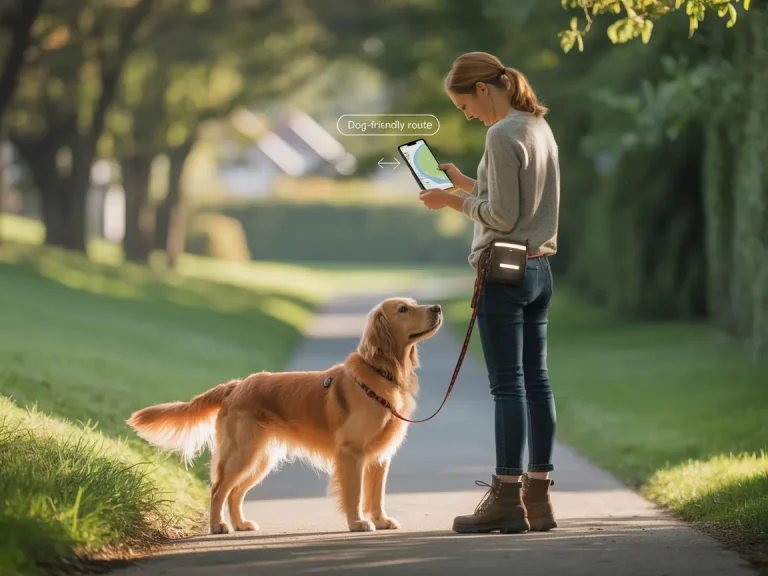A reliable dog leash holder can turn a tug-of-war slog into a calm, confidence-building walk. It’s not just a hook or clip — it’s the little anchor that keeps you connected, the quiet promise that both you and your dog are on the same team. Here are eight down-to-earth secrets that mix real training habits, gear that actually works, and smart setup, so your next walk feels less like a battle and more like a shared rhythm.
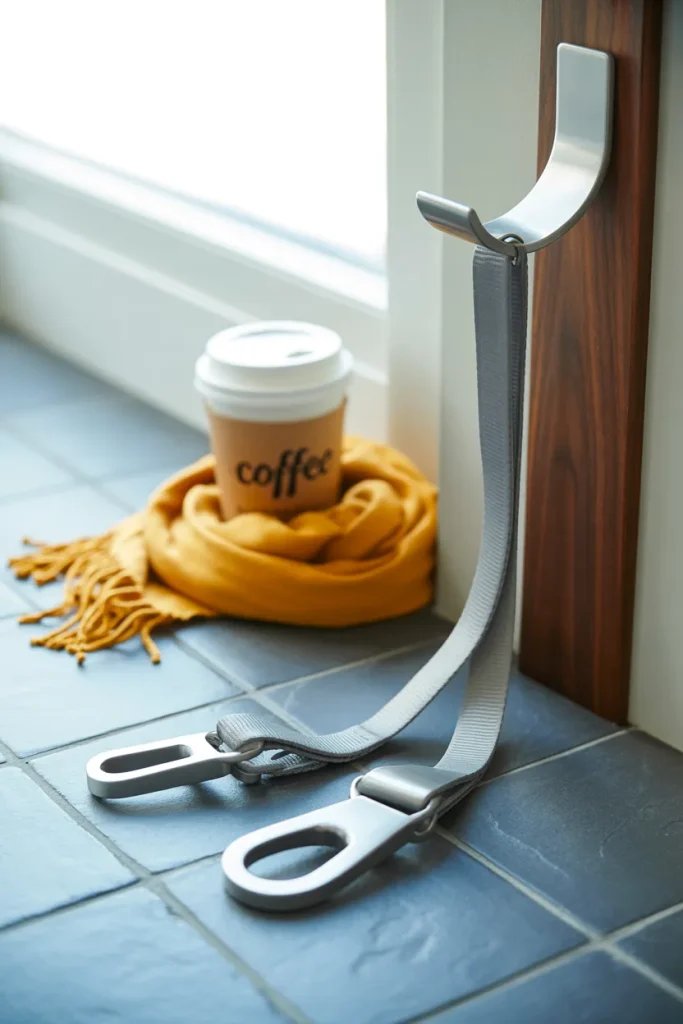
1. Choose the Right Leash Holder
What’s a leash holder to you? Maybe it’s the hook by the door, the belt you grab before the morning rush, or the clip built into a harness that never lets you fumble. The right one depends on how and where you walk.
Are you juggling coffee and a commuter train? Hands-free belts are your best friend — they keep your caffeine upright and your pup under gentle control.
Do you hit trails where the dog can pivot mid-sprint? Rotating carabiners stop the leash from twisting into a pretzel when they dart over rocks.
Living in an apartment and racing the elevator? A stylish wall rack near the door means you grab-and-go without that panicked shuffle.
And don’t skimp on build quality. Rustproof powder-coated steel or aircraft-grade aluminum clips rated for at least double your dog’s weight? That’s security you feel in your hands. If you like the look of wood, go for oak or walnut sealed properly — nothing ruins a walk faster than a splintered rack or a piece that falls apart. Think of the holder like a good pair of shoes: it should fit the routine and still be reliable on the tough days.
2. Master the Fit: How to Set Up Your Leash Holder So It Actually Works
A misaligned holder doesn’t just look sloppy — it pulls on your body or your dog’s neck in ways that add up. Get the fit right, and everything feels easier. Get it wrong, and both of you end up compensating without realizing why the walk feels off.
Wearables for humans: The belt or strap should sit at hip level. Too high and your back takes the tug; too low and you’re wrestling for control. It should feel like a handshake, not a wrestling match.
Harness-integrated clips: If your pup pulls, place the clip at the chest. For the steady ones, between the shoulder blades keeps things balanced and relaxed.
Storage hooks: Mount them about 18 inches above your dog’s head — high enough to discourage nosey chewers but still easy to reach. This keeps leashes from tangling into the morning chaos like they’re trying to start their own knot club.
Before you hit the street, try the setup indoors: have your dog walk in a slow circle while you hold steady. If the tension dips, tilts, or feels “off” on one side, tweak it. You’d adjust a saddle before a ride; treat the leash holder the same way. And if you’re using a harness, especially for a dog that tends to pull, make sure you understand how a front-clip harness gives you extra turning control without choking—those designs redistribute pressure and help redirect without a tug-of-war. That little demo walk can save you frustration and sore muscles later.
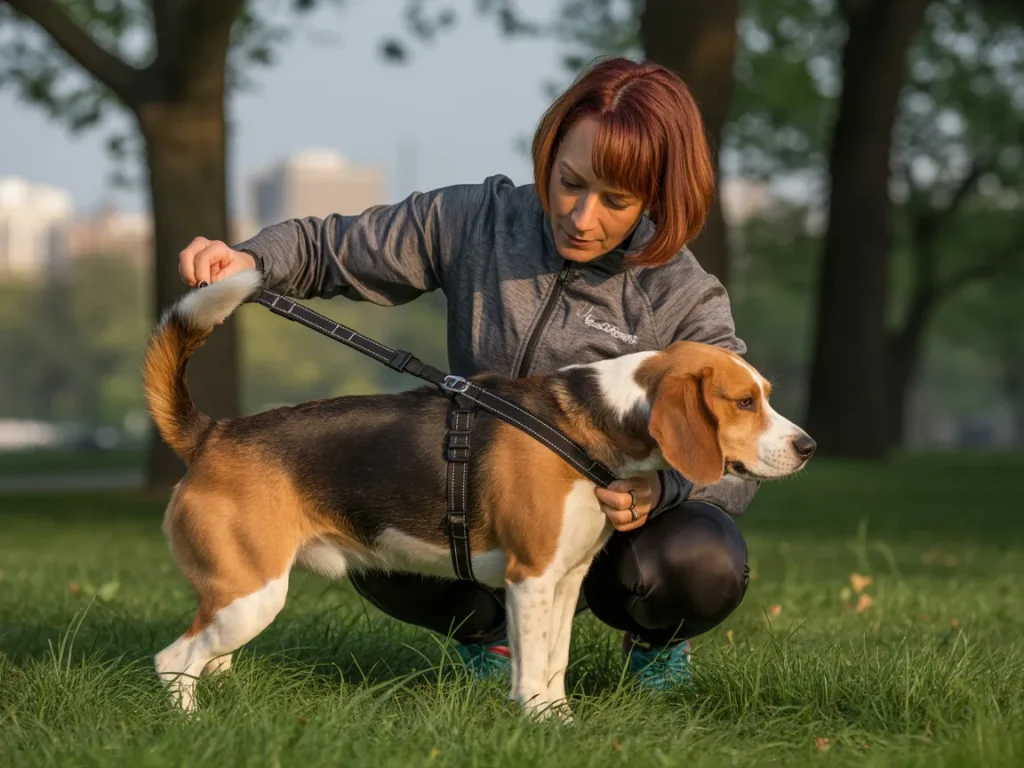
3. Pair Gear With Positive Training
Gear doesn’t magically create cooperation — but when you pair it with reward-based cues the holder becomes part of a language you’re building with your dog. Start at the door. Ask for a calm “Wait” before clipping in. Only open the door when they’re looking at you, sitting, and breathing like they’re ready to walk, not launch. That first second sets the tone. Catch the good stuff; if your dog goes to the holder on their own or waits without pulling, drop a jackpot treat. They’ll start associating the holder with “smart move” instead of “something that happens when I get dragged.”

4. Match Leash Length and Clip to the Environment
You wouldn’t wear hiking boots to a backyard barbecue, so why keep the same leash setup everywhere? City sidewalks want control—six-foot leashes are gold there. Wide fields scream “give me space,” so longer lines work better. If your dog’s walking posture drifts or they surge ahead, the loose-leash concept is worth revisiting; simple techniques like stopping when they pull and rewarding calm steps are what trainers at UC Davis recommend for building that rhythm without constant correction. The trick isn’t tossing the whole leash, it’s swapping the right clip for the moment.
5. Keep Equipment Clean and Inspected
Gear doesn’t last forever, but a little regular care stretches its life and keeps walks safe. Salted sidewalks in winter will eat away at metal if you let grime sit. Sand from the beach finds its way into every hinge and spring if you’re not careful.
Once a month, give your gear the once-over. Hand-wash nylon with mild dish soap, and let it air-dry flat—no heat, no shortcuts. Rub food-grade mineral oil into metal joints, then wipe off the excess so your dog’s fur doesn’t become a greasy mess. Look closely at stitching, especially around weight-bearing loops. If threads are frayed, retire that piece; you don’t want a surprise failure mid-walk.
And if your dog has itchy skin, treat their leash holder like part of their grooming routine. Wash the fabric parts weekly—pollen, dander, and detergent buildup can keep irritation going longer than it should. I had a rescue who would scratch herself raw until we started laundering her harness setup regularly; the difference was night and day.
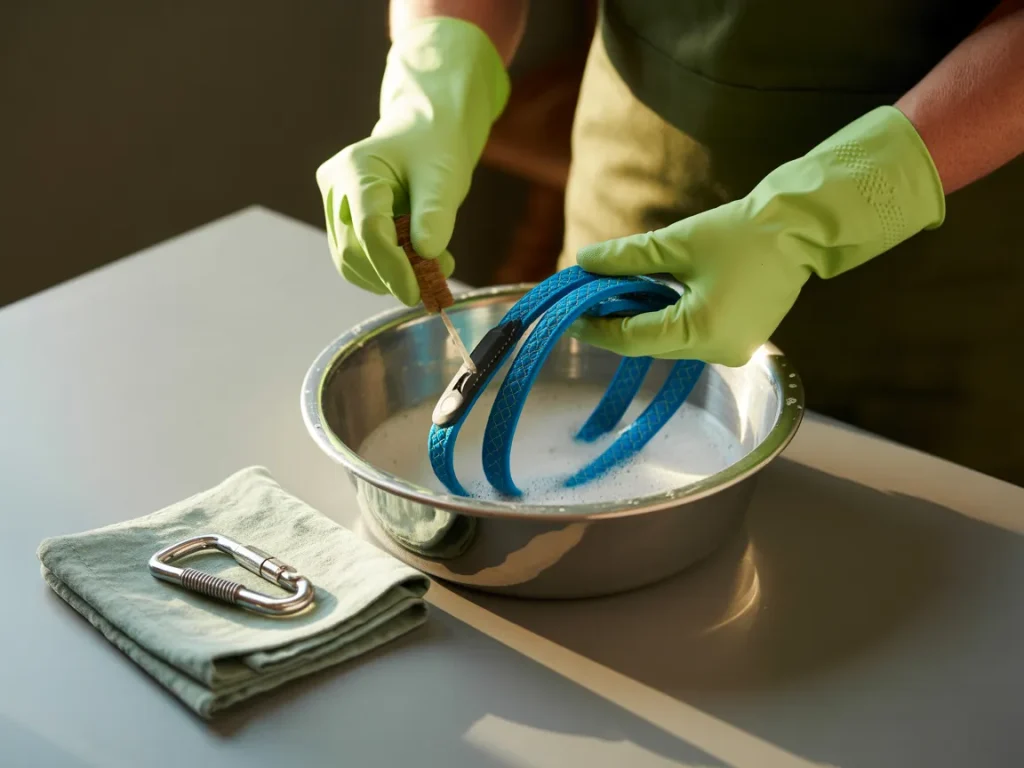
6. Explore Hands-Free Innovations
If your life involves jogging, juggling a stroller, or just needing both hands free, modern leash holders can feel like a small miracle. They let you move smoother while still keeping the connection. The gear you want has a few things in common: built-in elastic shock absorbers to soften sudden lunges, quick-grab handles near the dog end so you can catch their attention fast, and reflective threading that quietly says “I’m here” when the sun dips.
Heads-up though: hands-free setups reward good behavior and expose bad habits. Energetic puppies, especially, can get emboldened and start pulling harder because they think they’re in charge. That’s why you start inside—five-minute practice sessions, low stakes, easy corrections. Once they learn to keep their posture loose and stay responsive, take it outside. It’s like teaching someone to drive in an empty lot before letting them loose on the freeway.
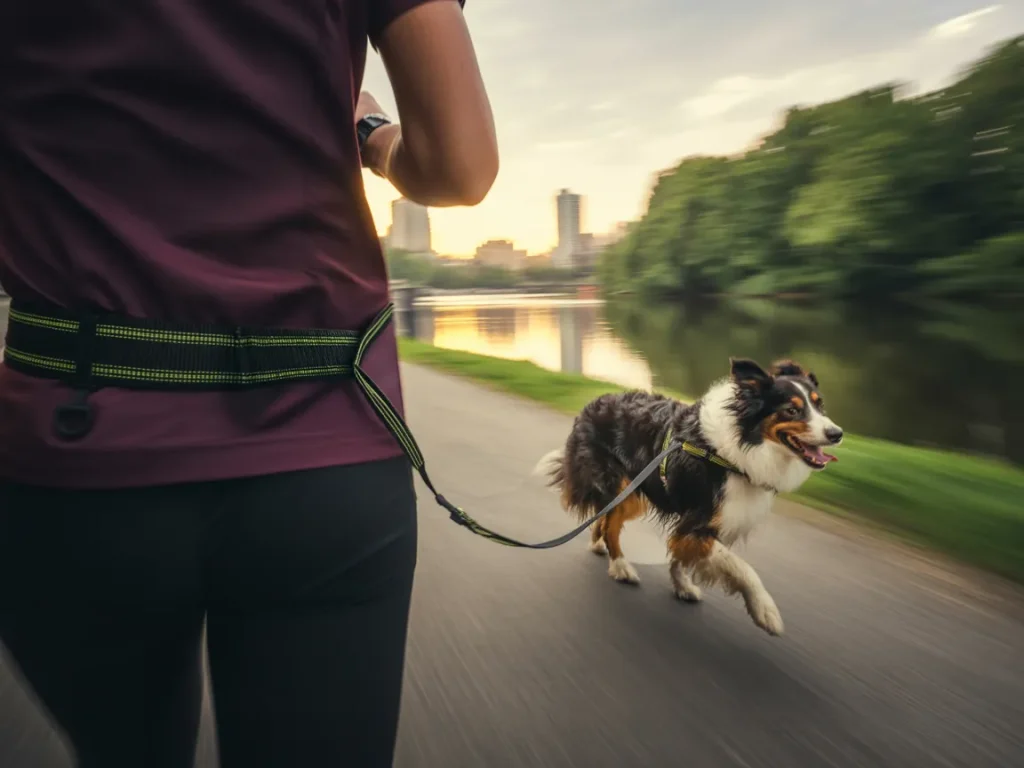
7. Troubleshoot Common Leash Holder Problems
Got a tangle every time you pull the leash out? Swivel clips are underrated little lifesavers—they let the line spin without wrapping up. Couple that with teaching a simple “switch” cue (so your dog automatically swaps sides when the leash brushes your leg) and you’ll cut down on the mid-walk wrestling matches.
Wall rack looking like a knot graveyard? Stagger the hooks—put longer leads hanging behind shorter ones. It’s a small layout tweak that keeps morning grabs from turning into a tangled mess. Think of it like organizing shoes: you wouldn’t pile everything in one heap and expect to find the right pair fast.
Handles getting chewed to bits? Wrap the first few inches in cotton rope or spray a dog-safe bitter deterrent. Most dogs don’t love the texture or taste, and that little barrier buys you time while you work on whatever’s driving the chewing.
If the gnawing keeps happening, don’t just blame the hardware—look at what’s underneath. Anxiety, especially separation stress, can turn a leash into a target. In those cases, temporary out-of-reach storage plus a desensitization plan from someone who knows behavior (a certified trainer) can reframe the whole thing. Sometimes the “problem” leash is really a signal that something else needs attention.
8. Customize for Special Cases
Every dog walks to their own beat. Some need tweaks that make the gear feel like it was made just for them.
Puppies
They’ve got growing bodies and curious mouths. Lightweight aluminum clips take the pressure off their necks, and a double-ended leash—one end on the collar, one on a front-clip harness—gives you gentle steering without making them feel trapped. It’s like giving them training wheels that don’t look like training wheels.
Senior Dogs
Joint stiffness doesn’t have to mean giving up walks. Arthritis-friendly holders with padded neoprene loops soften the load on your shoulders and wrists, so slower strolls stay comfortable. The right setup keeps both you and your older companion moving without the “ouch” factor.
Reactive Dogs
These pups can spin, bolt, or overreact in a hurry. Locking carabiners with full 360-degree swivels prevent accidental unclipping when they twist or spin, and a chest clip spreads force across the sternum instead of a sharp jolt to the neck—more humane redirection, less drama. Small changes here keep the walk from escalating into chaos.
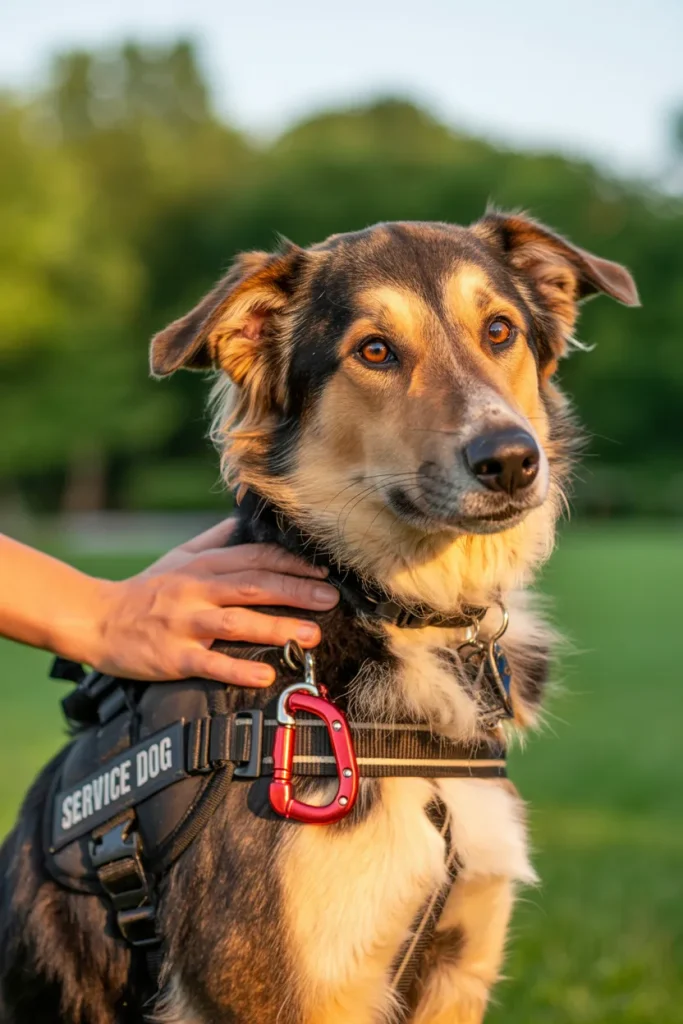
Conclusion: Leash Confidence Starts at the Holder
The right leash holder isn’t just a piece of gear—it’s the anchor of your walking routine. Get the fit right, pair it with thoughtful training, keep it maintained, and suddenly your walks go from “just getting through it” to something you both look forward to. Clip in, give the cue, and go. You’re not just walking a dog; you’re walking together.
Disclaimer: This article is for informational purposes only and does not constitute professional veterinary advice. Always consult a licensed veterinarian or certified dog trainer regarding the specific needs and health of your dog.
